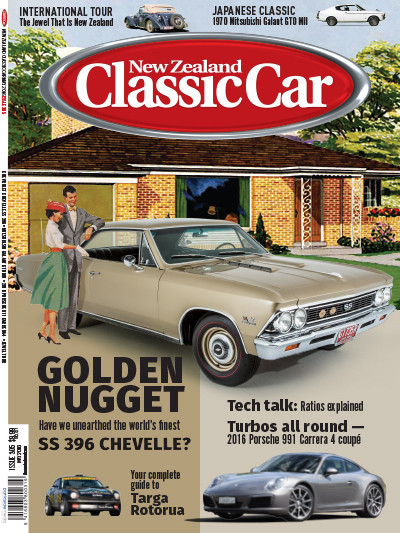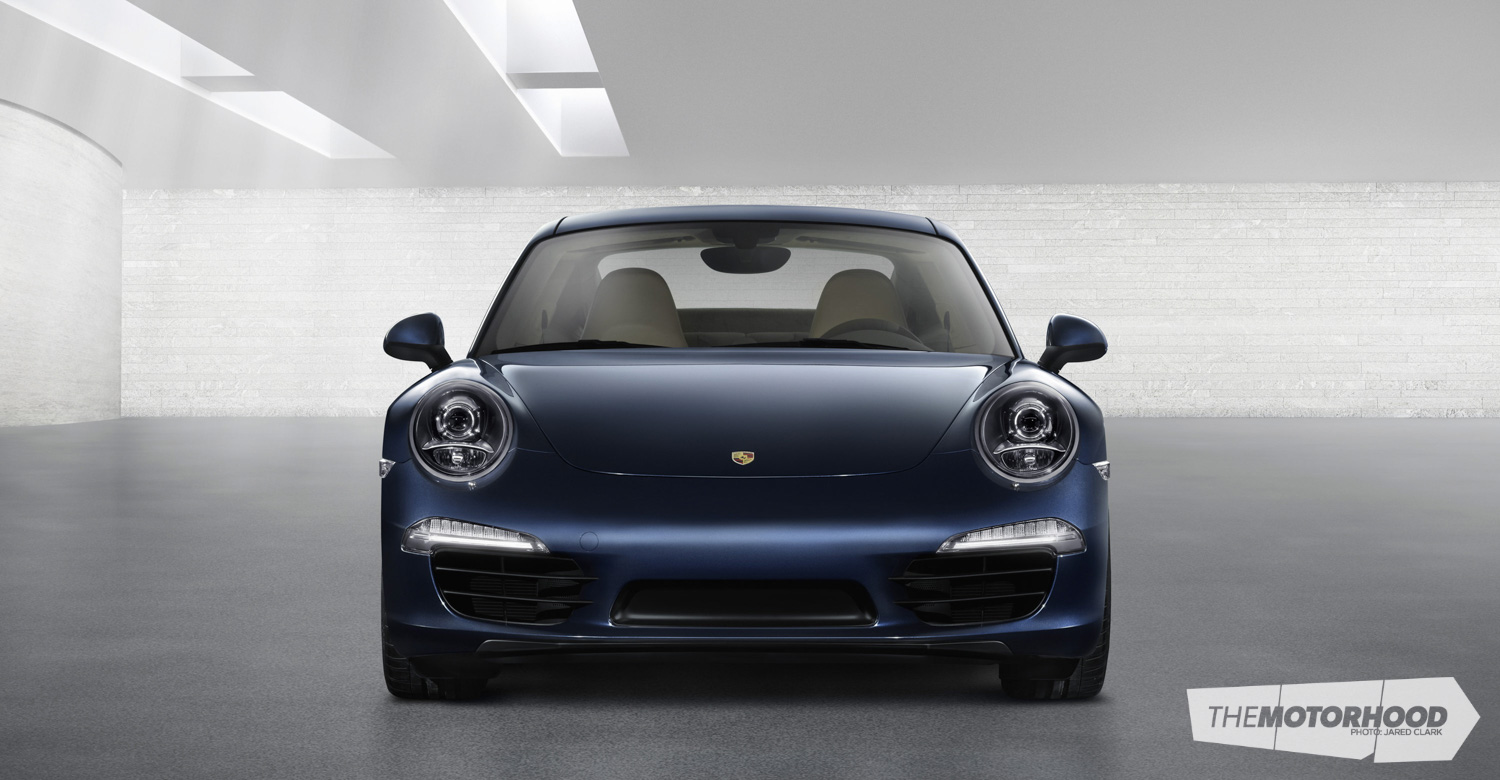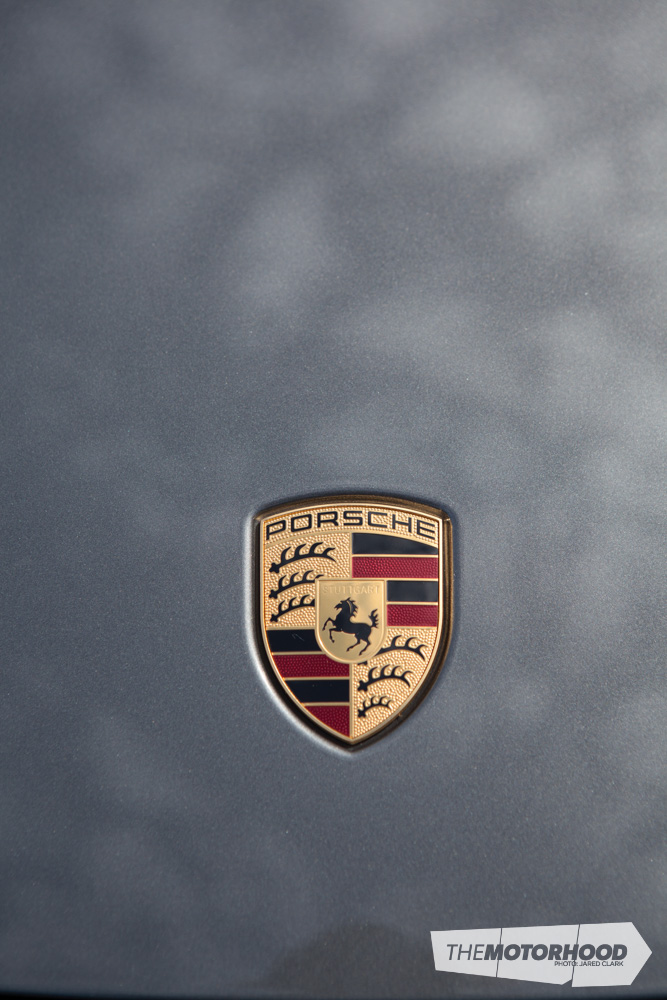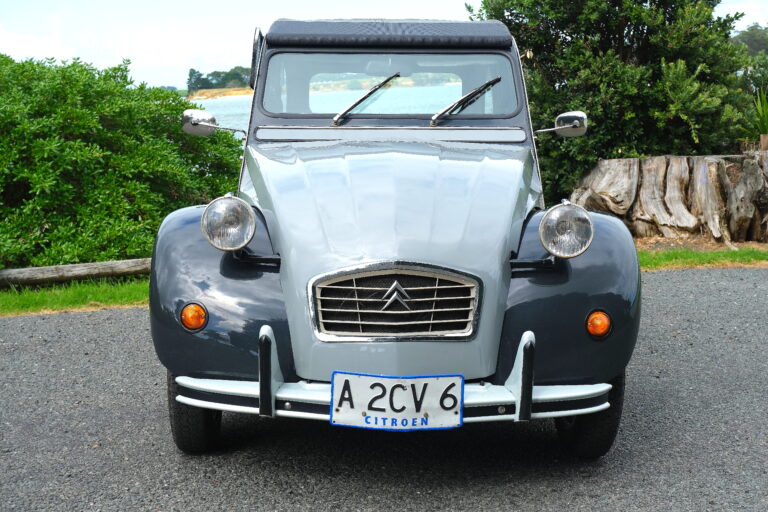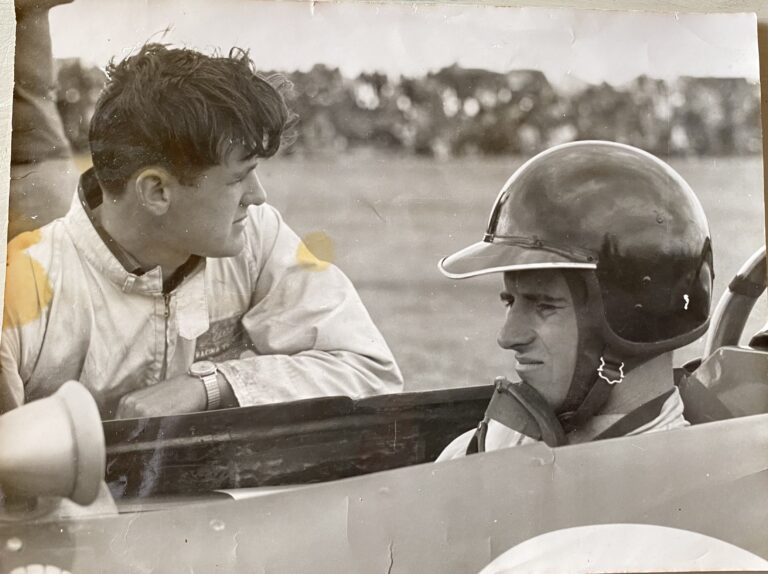
data-animation-override>
“It’s got a smaller engine and a pair of turbos — Lachie Jones tests whether messing with a winning formula has paid off for Porsche and its newest version of the 911 Carrera 4”
Together, the words ‘Porsche’ and ‘turbo’ conjure images of fast wide-bodied rear-engined flat-six cars with the ability to tear your face off at a moment’s notice (maybe several moments, in the case of some of the older-generation cars). To even the most casual Porsche fan, the ‘turbo’ moniker represents the brand’s ability to push the limits of engineering and add a dash of lunacy to the 911. But now when you think of a 911 that’s turbo, it doesn’t necessarily mean you’ll be going home in a casket. This is because the new 911 has been fitted with not one, but two turbochargers, in the name of better economy and reduced emissions.

I know what you’re thinking: the 911 can’t be turbo unless it’s the Turbo. Naturally aspirated flat-sixes are what make 911s the cars they are.
Now, I’m not a dyed-in-the-wool Porsche fan, so I can say this easily enough: adapt or die. If turbocharging makes sense to the brand we admire for creating 911s year upon year — all the while making them easier to drive, less likely to kill you, and a wee bit faster — so be it.
Of course, Porsche sentimentality means a good portion of readers won’t be convinced by being told that as the world changes, we must change with it. They will argue that in this PC world gone mad, surely our final refuge of senseless indulgence is that of the fast car. So, has Porsche managed to progress its most important car further, while changing tack entirely on what drives it? Let’s see.
The cool factor
Importantly, the 911 looks great. Not so ostentatious that you couldn’t take it to a TPPA protest without getting mauled, yet low and wide enough to say “I’m a sophisticated thug who’s ready to play”. There have been several small tweaks around the body for this new-generation 991, but, to the untrained eye, it has stuck with what was working on this car’s predecessor. The wider arches of the all-wheel-drive cars (44mm over the two-wheel drives) don’t necessarily let you discern between the two, so a seamless light strip across the rear has been installed on all four-paw models, just so you know who’s going to leave you for dust in the corners or who might leave you in a cloud of dust if the traction control gets switched off.
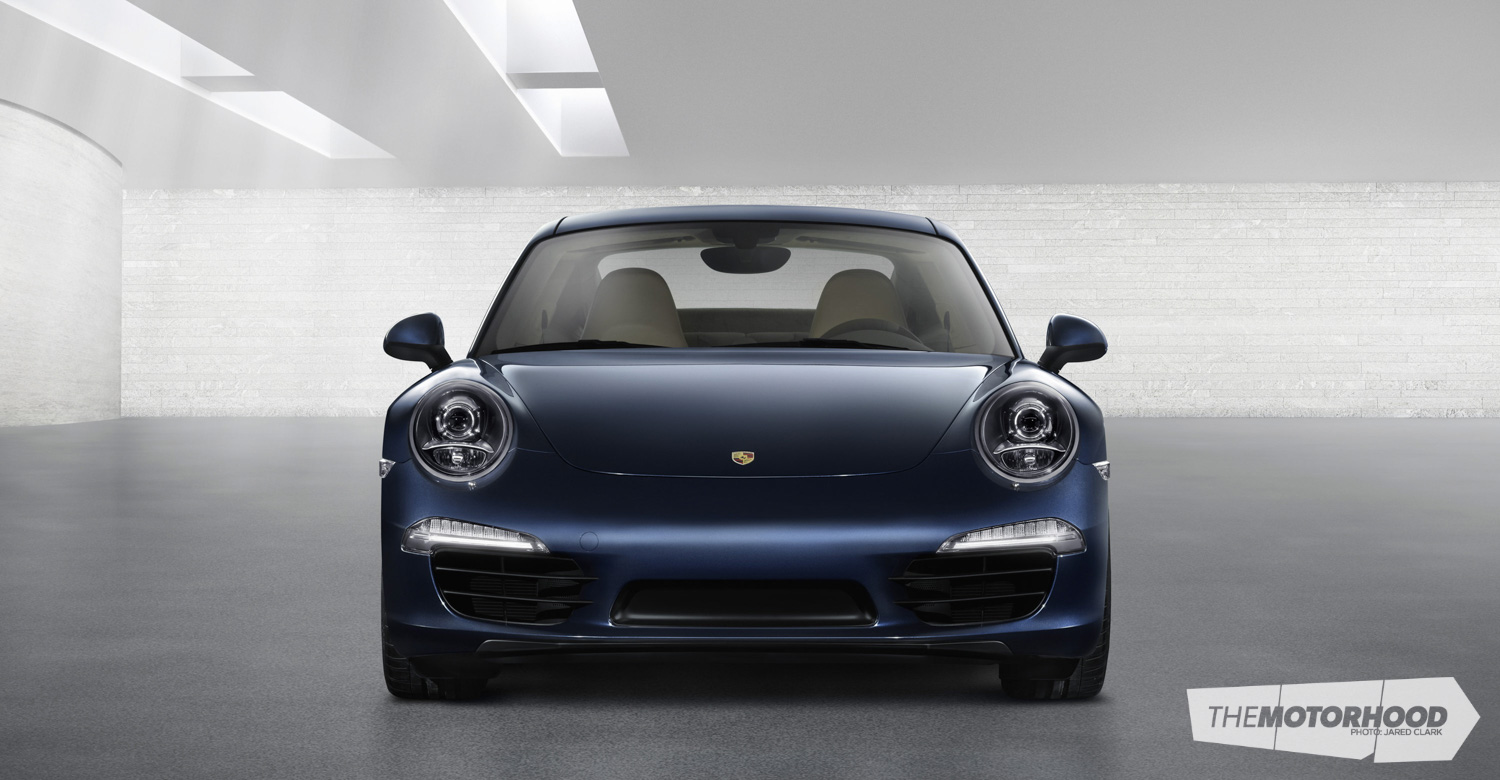
Our test car for a few days was finished in Agate Grey, which borders on a slate-brown colour (we liked it), and rode on 20-inch Carrera Classic wheels. Perhaps because we drove mainly in and around central Auckland, the 911 barely raised an eyebrow from fellow commuters and — in our opinion — this is a good thing. In days gone by, if you were driving a 911, you were a considered a bit of a — well, a 911 driver. Now that there are so many Audis and BMWs that have been done up by the factory and the end-user to look fancier than the 911, you could almost argue it’s modest to look at. There is a sense that the gaudiness of Porsche ownership has dissipated somewhat since the release of the Cayenne, the Panamera, and, most recently, the Macan, as the brand dips its toes into the family-friendly waters of supermarket runs and restaurants at which one might eat free on one’s birthday.
Replacement for displacement
The new 911-standard twin-turbo 3.0-litre engine has proven that there is, in fact, a replacement for displacement. Although forced induction has been a way of life for a number of other brands’ performance cars for a few years now, Porsche has been squeezing every last bit of power it could from the naturally aspirated flat-sixes. This mid-generation change is a sensible move from Porsche. Getting the buy-in from customers who realized the first generation was a good car means we can never look back at the entire 991 model range and say yuck, as some (many) did with the 996.
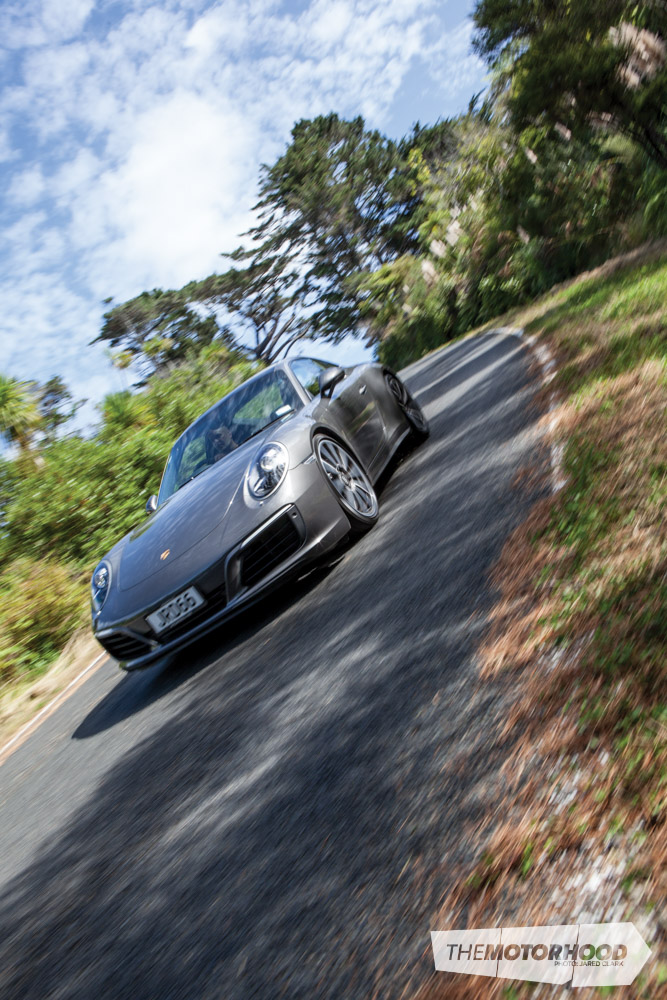
Both the Carrera and Carrera S have dropped their respective 3.4 and 3.8 engines in favour of the 3.0-litre unit. The 911 Carrera jumps from 257kW (345hp) to 272kW (364hp). The Carrera S’s numbers are even better — 309kW (414hp), up from 294kW (395hp). Pretty impressive given that, in terms of Porsche’s recent history, these are very, very similar numbers to those offered by the first generation 997 GT3 and GT3 RS.
The optional PDK (Porsche Doppelkupplungsgetriebe) gearbox is truly something to behold (we’ll get into the boxes you’ll need to tick later, but suffice to say we think the PDK option is worth every cent). While the turbos push you through the revs quickly — quicker than you even consider the gear change, you’re back at the bottom of the power curve not having lost any momentum or pace. Back in real life sitting on gnarled motorways at 35kph, the PDK slips quietly back into a more sedate pace, lulling you into a sense of calm and safety.
As a way of shedding weight on the previous car, around 45 per cent of the body is aluminium, with the balance being very thin but strong pieces of magnesium and slightly heavier steel. This made for a reduction of 40kg from the 997. This latest-generation 991 has put a bit of that beef back on, as it has to haul around the extra weight of the turbos. It’s not noticeable, but I’m quite sure it will irk the designers of the car to the point that the next version will again be headed for the vehicular equivalent of Jenny Craig.
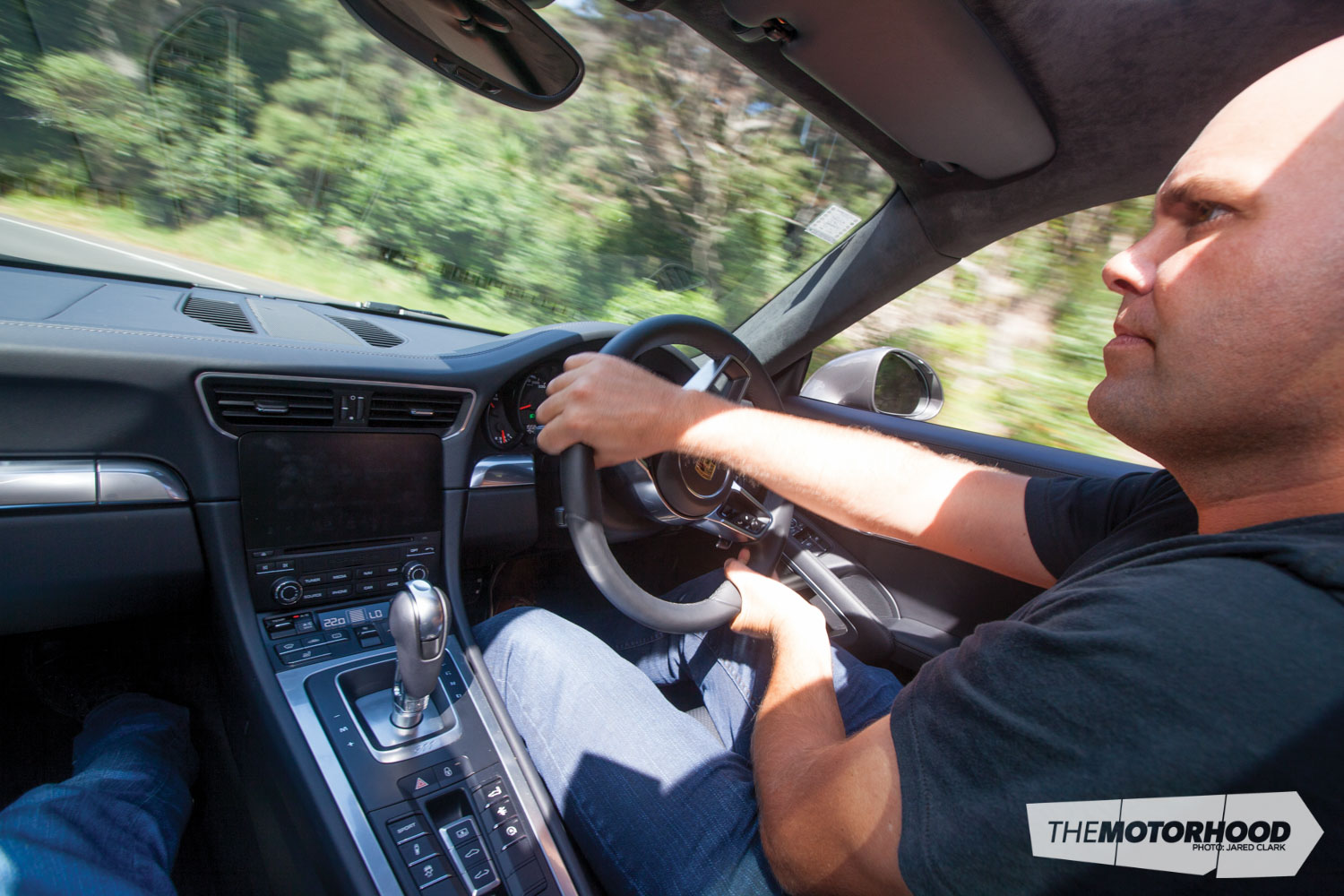
The drive
So, how does all this translate in terms of the drive? We were most intrigued by the mid-range pickup the new 911 boasts. From 1700rpm right through to 5000rpm, there is a healthy torque curve that we were interested in testing, as this is where most of the driving is done. We were impressed. With both turbos spooling in this rev range, the 911 keeps you firmly in the back of the chair right until the point you feel the need to change gear. We did notice that the PDK gearbox heads quickly to seventh when you’re taking it easy on the motorway, meaning that any kind of quick manoeuvre from low revs needs to be planned well in advance, more so than in the previous model.
One of the concerns I had was the noise these changes might create. I’m a fan of the Porsche’s muted scream, and I hoped the turbos wouldn’t overpower that too much. I shouldn’t have worried; the sonorous flat-six drone remains, with a slight whoosh from the turbos under sustained acceleration.
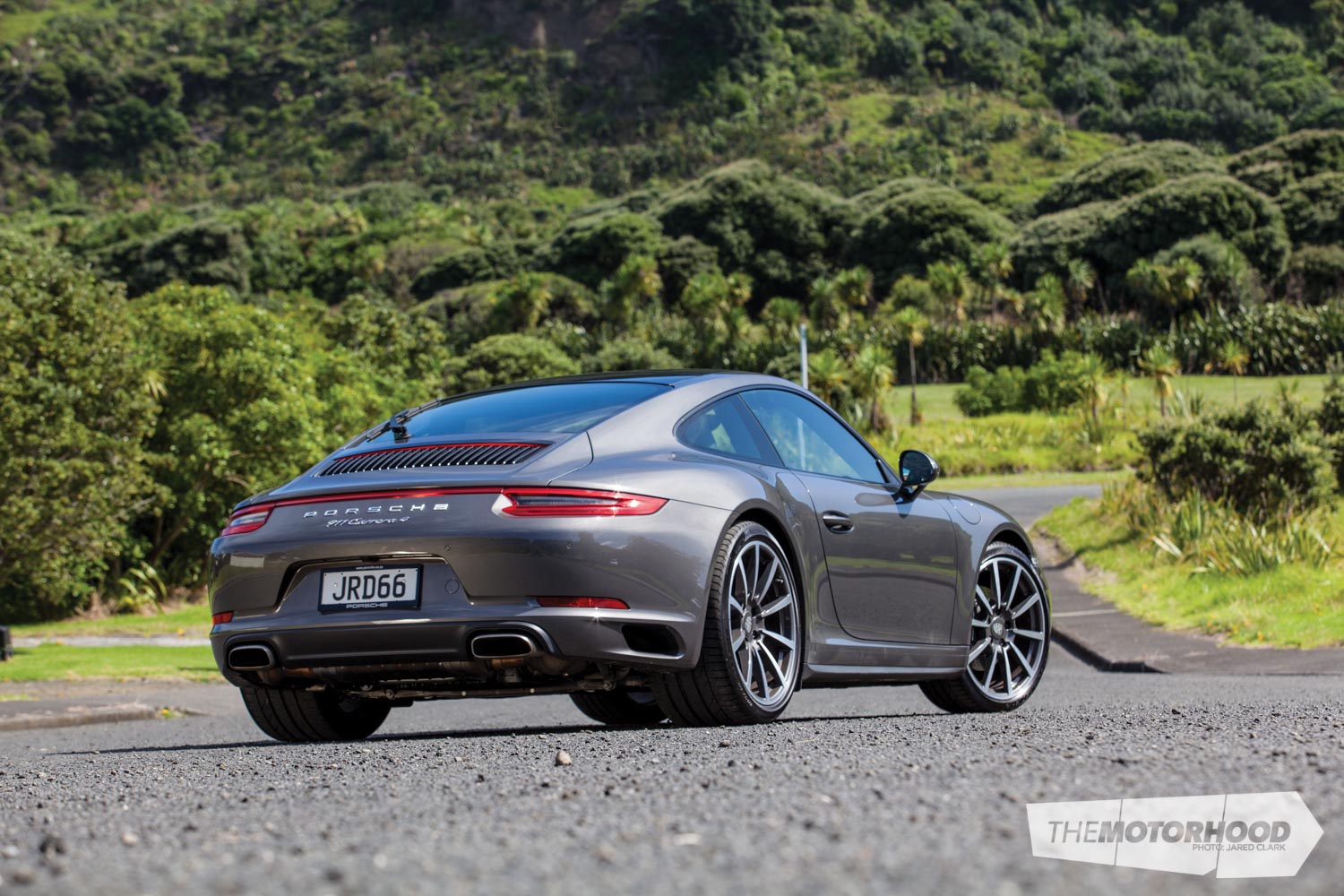
Once on the back roads and with Sport mode engaged, the 911 becomes the car it wants to be. Our test model was the Carrera 4 (uncomplicatedly, the ‘4’ stands for 4WD). This system, paired with the optioned 20-inch wheels, made for some very impressive cornering from the Porsche. It felt planted at every point and was forgiving enough to let you have a second crack at the occasional apex. The wider rear track means a type of stability that instils absolute confidence. As some lovely West Auckland back roads unfurled in front of us, this base-model 911 took the drive in stride and did everything we would expect from a proper sports car. It felt planted (reassuringly so with a bit of pace up) and happy to be flung in and out of some tricky corners.
Comfort zone
The 911 is comfortable — very comfortable. The seats are big but snug at the same time. The driving position is nice and low but not cumbersome in traffic, with very good visibility all around. Every driving aid is just so: the steering-rake adjuster under the steering wheel is positioned perfectly within reach of the driver, the PDK paddles are just the right size so as not to interfere with the indicator or wiper stalks, and the on-board computer is as intuitive and easy to use as any I’ve seen before. Freshly standard across the 911 range is the Apple Car Play system, which is integrated into the PCM (Porsche Communication Management) system via USB. This allows Siri to be activated via a button on the indicator stalk. But, perhaps most vitally in this new relationship with Apple, there is dedicated iPhone (or other smartphone) storage, meaning no more phones flying around the cabin if you happen to get a touch overzealous on a back road.
Google Earth and Google Street View are standard fare for navigation systems now. With the nav-view available on the dash, this set-up makes finding and arriving at any unknown destination a breeze via a recognizable interface.

While you’d not expect a cavernous interior in the 911, the Carrera remains 55mm longer than the 997, meaning that the cabin has benefited ever so slightly. While there are back seats in a 911 — and Porsche takes pride in offering them — they are best suited for those with no requirement for blood flow below the knees. But no matter; the rear seats fold onto themselves to provide an almost generous shelf which, at a push, will fit a set of golf clubs. The front boot space is actually quite a large area (at 145 litres) and comfortably swallowed all of our photographer’s gear, as well as a few other bits and pieces, so we’d say more than enough space for a long weekend away without the kids — or maybe you could just keep driving as Sunday night rolls around and buy new clothes as you need them?
Extra bits
The list price for the Carrera 4 is $221K. With the options running close to $25K over and above the out-of-the-box asking price, the 911 is by no means a cheap car. Of the options available, we’d certainly go for the PDK transmission ($6K) over the standard seven-speed manual box, and the electric glass sunroof ($5170). At $5010, the front axle lift might be a step too far, as we found the standard ride height more than capable of managing judder bars at very low speed. Our test car’s 20-inch Carrera Classic wheels don’t come cheap (at $5500), but they’re cool, so we’d either fork out for them or go for the slightly more cost-effective 20-inch Sport Design wheels ($3900).
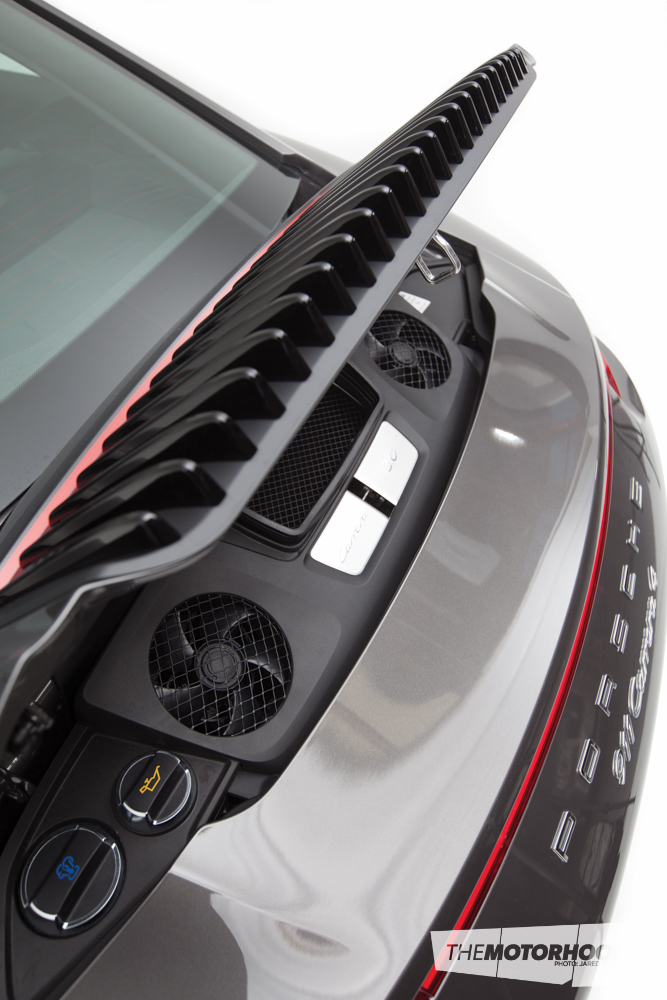
One nifty feature our test car was fitted with that we quite liked was the lane-change assist ($1590). Using radar sensors, the system issues a warning signal via the door mirror whenever a vehicle rapidly enters your blind spot on either side of the car. One option not fitted to the test car that we’re always a fan of is adaptive cruise control, and at $4320 it seems a good box to tick.
The buyer
The smart money often waits for the second version of any car to be released to ensure the gain of any goodies the manufacturer may have deliberately left off the earlier model to save something cool for the next one, and it also means the manufacturer will have ironed out any crinkles that may have appeared in the original iteration. In the case of the second-generation 991, Porsche has thrown the ironing board out the window and put a couple of turbochargers in its place. In this brave new world of turbocharging across the range for Porsche, we’re quite sure its faithful will follow. Which makes us wonder why it’s taken the big step of turbocharging the standard 911 to appease the trees and save us some fuel — which are both good things — and hasn’t gone a step further by using the tech available to it via the 918 and gone hybrid to achieve more of both? I’d suggest keeping an eye on the second version of the next 911 generation for that one.

2016 Porsche 911 (Generation 2) Carrera 4 Coupe
Performance
- Power: 272kW at 6500rpm
- Max. torque: 450Nm at 5000rpm
- 0–100kph: 4.5 seconds (manual), 4.3 seconds (PDK), 4.1 seconds (PDK with Sports Chrono Package)
- 0–160kph: 9.7 seconds (manual), 9.3 seconds (PDK), 9.0 seconds (PDK with Sports Chrono Package)
- Gearbox: Seven-speed PDK transmission (optional)
Brakes
- Front and rear: Four-piston aluminium monobloc calipers, perforated and internally ventilated discs, 330mm, (F) 34mm thick, (R) 28mm thick
Dimensions
- Length: 4499mm
- Width: 1978mm (incl. door mirrors)
- Height: 1303mm
- Wheelbase: 2450mm
Options
- Porsche Entry Drive: $2520
- PDK transmission: $6000
- 20-inch Carrera Classic wheels: $5500
- Power Steering Plus: $580
- Front axle lift: $5010
- Sport Design mirrors: $1230
- Electric glass sunroof: $5170
- Light Design Package: $1010
- Lane-Change Assist: $1590
- Total price as tested: $249,610
Pick up a copy of New Zealand Classic Car Issue No. 305 below:
